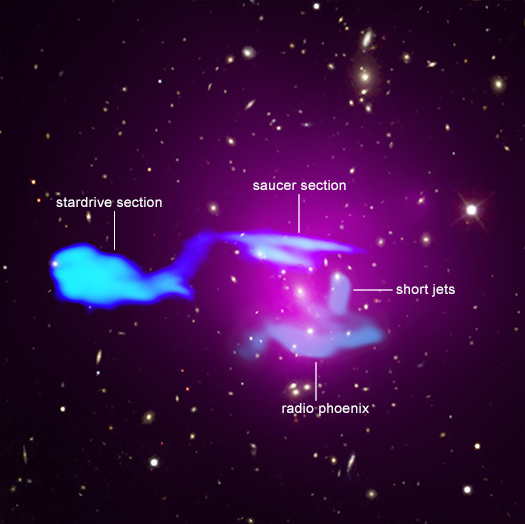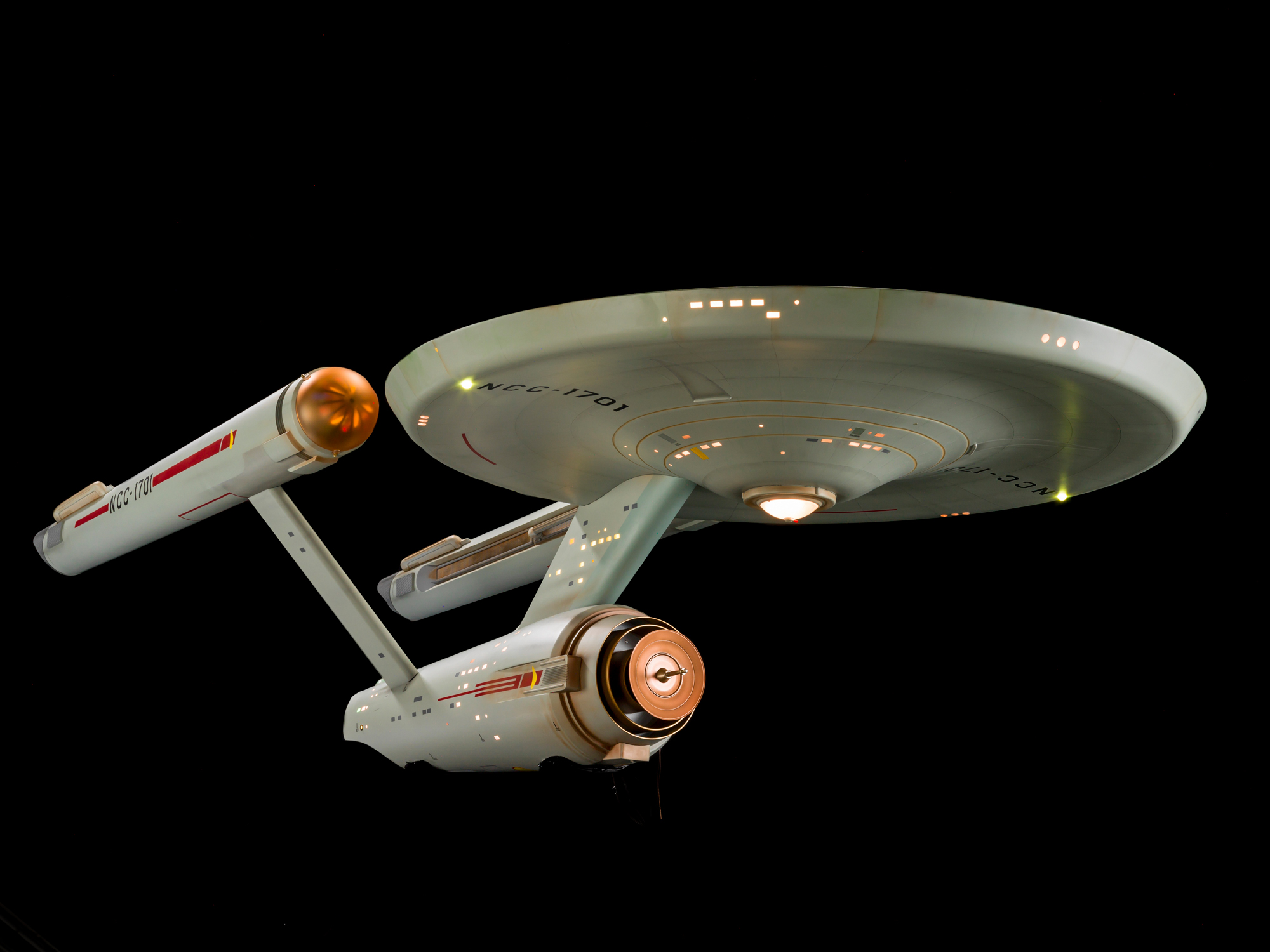
Is that the USS Enterprise blurring as it makes the jump to warp speed?
Well, no. But a new photo of the galaxy cluster Abell 1033 certainly does call the famous "Star Trek" starship to mind.
The image, which was released Thursday (Nov. 15), is a composite that combines observations in optical light as well as X-ray and radio wavelengths, the latter two of which are represented by the colors purple and blue, respectively. [USS Enterprise Evolution : The Many Faces of Star Trek's Favorite Starship]
The optical data was gathered by the Sloan Digital Sky Survey, the X-ray by NASA's Chandra X-ray Observatory and the radio by the Low-Frequency Array network in the Netherlands.
Abell 1033 lies about 1.6 billion light-years from Earth. The object is actually two galaxy clusters coming together in a dramatic, hugely energetic smashup that's generating shock waves and other forms of turbulence in this patch of space-time.

"In Abell 1033, the collision has interacted with another energetic cosmic process — the production of jets of high-speed particles by matter spiraling into a supermassive black hole, in this case one located in a galaxy in one of the clusters," Chandra mission team members wrote Thursday in a description of the image.
"These jets are revealed by radio emission to the left and right sides of the image," they added. "The radio emission is produced by electrons spiraling around magnetic field lines, a process called synchrotron emission."
Get the Space.com Newsletter
Breaking space news, the latest updates on rocket launches, skywatching events and more!
The observed radio emission in Abell 1033 spans a whopping 500,000 light-years, Chandra team members said. The electrons responsible for this emission have likely been re-energized, a result that researchers announced and explained in an October 2017 study. You can read it online for free at arXiv.org.
The newly released image is an example of pareidolia, which describes the tendency of the human brain to see familiar shapes in more or less random data. Other examples include the famous "Face on Mars" and the various creatures that some folks see in the Red Planet rocks photographed over the years by NASA's Curiosity rover.
Mike Wall's book about the search for alien life, "Out There" (Grand Central Publishing, 2018; illustrated by Karl Tate) is out now. Follow him on Twitter @michaeldwall. Follow us @Spacedotcom or Facebook. Originally published on Space.com .
Join our Space Forums to keep talking space on the latest missions, night sky and more! And if you have a news tip, correction or comment, let us know at: community@space.com.

Michael Wall is a Senior Space Writer with Space.com and joined the team in 2010. He primarily covers exoplanets, spaceflight and military space, but has been known to dabble in the space art beat. His book about the search for alien life, "Out There," was published on Nov. 13, 2018. Before becoming a science writer, Michael worked as a herpetologist and wildlife biologist. He has a Ph.D. in evolutionary biology from the University of Sydney, Australia, a bachelor's degree from the University of Arizona, and a graduate certificate in science writing from the University of California, Santa Cruz. To find out what his latest project is, you can follow Michael on Twitter.









